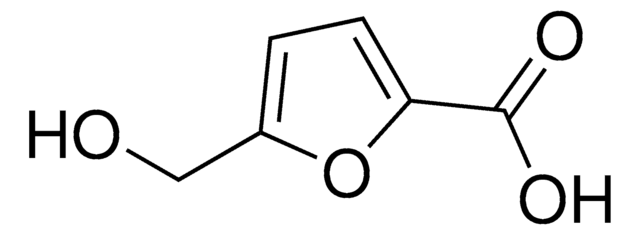推荐产品
等级
analytical standard
质量水平
方案
≥95.0% (HPLC)
保质期
limited shelf life, expiry date on the label
应用
clinical testing
包装形式
neat
储存温度
2-8°C
SMILES字符串
OC1=CC=CC(C(O)CC(O)=O)=C1
InChI
1S/C9H10O4/c10-7-3-1-2-6(4-7)8(11)5-9(12)13/h1-4,8,10-11H,5H2,(H,12,13)
InChI key
KHTAGVZHYUZYMF-UHFFFAOYSA-N
一般描述
3-(3-Hydroxyphenyl)-3-hydroxypropionic acid is an organic acid and a probable metabolite of m-tyrosine (3-hydroxyphenylalanine). It is reported as an excretion product of the anaerobic bacteria of Clostridium genus.[1] It is also reported to be found in higher concentrations in the urine of patients with autism spectrum disorders (ASDs) and schizophrenia.[2][3][4] It can be used as a diagnostic biomarker for several neurological conditions such as ASDs.[5]
储存分类代码
11 - Combustible Solids
WGK
WGK 3
闪点(°F)
Not applicable
闪点(°C)
Not applicable
The urinary metabolomics profile of an Italian autistic children population and their unaffected siblings
Noto A, et al.
The Journal of Maternal-Fetal & Neonatal Medicine : The Official Journal of the European Association of Perinatal Medicine, the Federation of Asia and Oceania Perinatal Societies, the International Society of Perinatal Obstetricians, 27, 46-52 (2014)
A critical evaluation of the use of gas chromatography-and high performance liquid chromatography-mass spectrometry techniques for the analysis of microbial metabolites in human urine after consumption of orange juice
Ordonez LJ, et al.
Journal of Chromatography A, 1575, 100-112 (2018)
A Simple and Convenient Synthesis of Unlabeled and 13C-Labeled 3-(3-Hydroxyphenyl)-3-Hydroxypropionic Acid and Its Quantification in Human Urine Samples
Khaniani Y, et al.
Metabolites, 8(4), 80-80 (2018)
Urinary 3-(3-hydroxyphenyl)-3-hydroxypropionic acid, 3-hydroxyphenylacetic acid, and 3-hydroxyhippuric acid are elevated in children with autism spectrum disorders
Xiong X, et al.
BioMed Research International, 2016 (2016)
Gema Pereira-Caro et al.
Free radical biology & medicine, 160, 784-795 (2020-09-15)
The health benefits of orange juice (OJ) consumption are attributed in part to the circulating flavanone phase II metabolites and their microbial-derived ring fission phenolic catabolites. The present study investigated these compounds in the bloodstream after acute intake of 500 mL
Active Filters
我们的科学家团队拥有各种研究领域经验,包括生命科学、材料科学、化学合成、色谱、分析及许多其他领域.
联系技术服务部门







